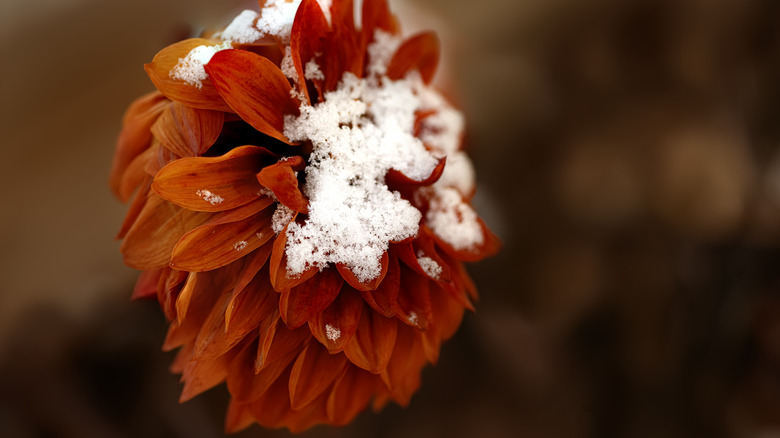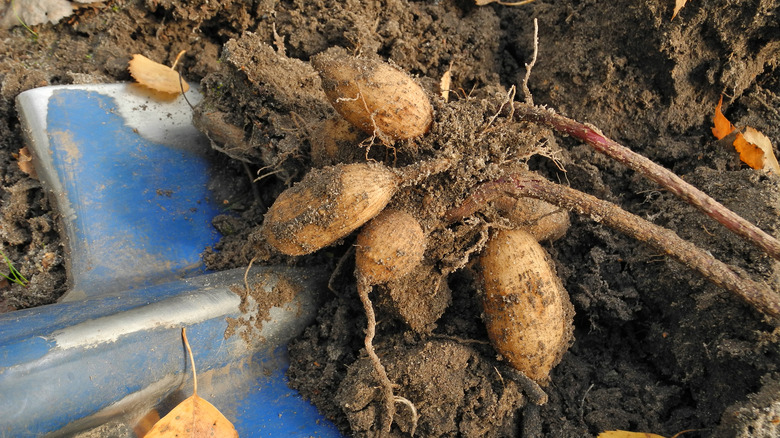Overwintering Your Dahlias? Avoid These Common Mistakes At All Costs
Dahlias (Dahlia) are herbaceous perennials with long-blooming, breathtaking flowers that come in a wide range of colors. Their vibrant blooms make dahlias a popular choice for gardeners, and the plants can adorn your yard for decades with proper care. But since these Mexico natives need warm temperatures to thrive, overwintering them requires some planning and effort. Generally, dahlias grown in colder climates ( in USDA zones below 7 ) are removed from the soil before winter, and their tubers are stored in a permeable medium like vermiculite. That said, whether you grow the flowers in zones where they're annual or perennial, overwintering dahlias is a problematic task. That's because home gardeners are likely to make simple, inadvertent, yet highly consequential mistakes that can threaten the dahlia tubers' survival during the winter dormancy period.
One error is to misgauge the plants' environmental needs and leave the tubers in the ground in a region that's too cold. And even if the climate zone is appropriate for in-ground overwintering, not providing adequate drainage is a mistake to steer clear of. On the other hand, in colder climates where the tubers must be brought inside for the winter, bringing the dahlias indoors without giving them time to harden is a huge mistake that can keep the roots from going dormant. If you've brought the dahlia tubers in, the most painful blunder you can make is to disregard them completely for the duration of the cold season. We cover all these errors, and ways of avoiding them, below.
Key mistakes to avoid when overwintering dahlias (and how to avoid them)
Not knowing what USDA growing zone you live in, and whether dahlias are capable of overwintering outdoors in your region is perhaps the most egregious error you can make. Why? Because if your location is too cold, and you leave the tubers outdoors for the winter, the ground will freeze and they will die — it's as simple as that. Unless you live in USDA zones 7 or higher, you must protect the dahlias from cold weather by overwintering them indoors. If you live in a warmer climate typical of USDA zones 7 to 10, the next most lethal threat to your overwintering dahlia tubers is waterlogging.
Sure, dahlias love to get drenched in water in the hot summer months. In fact, they thrive with regular, deep waterings. But come winter, any water that doesn't drain away from the dahlia tubers will likely cause them to rot, with fatal consequences. So, if you're leaving the tubers in-ground, make sure there's a drainage strategy in place to channel rainwater away from the dormant plants. In a colder climate, you may well be tempted to bring the dahlia tubers indoors as soon as possible before chilly weather blankets the region. Rushing to get the tubers out is also a mistake since it denies them the chance to go dormant. The best practice is to wait until the first frost destroys the stems and leaves, then give the plants another 10 days outside. At this point, the tubers will be ready for their dormancy stage and the migration indoors. Inside, don't just leave the tubers unattended. They need occasional watering if their substrate becomes dry and they shrivel up.

